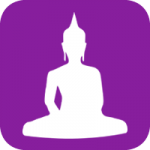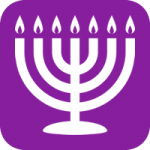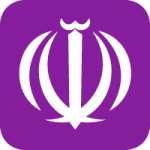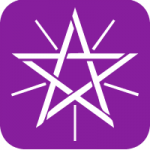Discover the many different Buddhist Calendars which exist in Southeast Asia today, how they work and of which Buddhist festivals and important events they keep track.
 The Buddhist Calendar is a term for a set of Religious Calendars all of which are Lunisolar Calendars in use throughout countries in South Eastern Asia like Cambodia, Laos, Thailand and, perhaps most well-known, in Sri Lanka to record religious and official events. Each country has its own variations concerning the Buddhist Calendar, despite sharing common ancestry, such as, the names and numbering of the months as well as the use of cycles.
The Buddhist Calendar is a term for a set of Religious Calendars all of which are Lunisolar Calendars in use throughout countries in South Eastern Asia like Cambodia, Laos, Thailand and, perhaps most well-known, in Sri Lanka to record religious and official events. Each country has its own variations concerning the Buddhist Calendar, despite sharing common ancestry, such as, the names and numbering of the months as well as the use of cycles.
Whilst predominantly based on the ancient version of the Hindu Calendar which uses the sidereal year in the place of a solar year, the collection of Southeast Asian Calendars, known as Buddhist Calendars, do not use apparent reckoning to remain synchronized with the tropical year. Instead, the Buddhist Calendars use their own versions of the Metonic cycle which, intended to match the progression of tropical year and not sidereal years, is slowly forcing the Buddhist Calendars further and further out of sync with the tropical year by around one day every sixty years.
Buddhist Festival Calendar
Although it no longer holds the title of official calendar in Southeast Asia, having been replaced by the Thai Buddhist Era which is effectively a renumbered form of the Gregorian Calendar in countries like Thailand, the Buddhist lunisolar calendars are still used to determine important Buddhist festivals.
| Buddhist date | International date | Public holiday in | Notes |
|---|---|---|---|
| Full moon of Pausa | January | Sri Lanka | Duruthu Poya: Commemorates the first visit of the Buddha to Sri Lanka |
| Full moon of Magha | February | Cambodia, Laos, Sri Lanka, Thailand | Magha Puja in Cambodia, Laos, Thailand and Navam Poya in Sri Lanka |
| Full moon of Phalguna | March | Laos, Myanmar, Sri Lanka | Boun Pha Vet (Laos), Tabaung Festival (Myanmar), Medin Poya (Sri Lanka) |
| Caitra (occasionally in Vaisakha) | 13–17 April (varies by country) |
Cambodia, Laos, Myanmar, Sri Lanka, Thailand | New Year's Day New Year's Day was traditionally marked by the Sun´s entry into Aries but is now fixed in most countries; Myanmar still follows the tradition |
| Full moon of Caitra | April | Sri Lanka | Bak Poya: Commemorates the second visit of the Buddha to Sri Lanka |
| Full moon of Visakha | May | Cambodia, Laos, Myanmar, Thailand, Sri Lanka | Buddha Day |
| Full moon of Jyaistha | June | Sri Lanka | Poson Poya: Commemorates introduction of Buddhism to Sri Lanka |
| Full moon of Ashadha | July | Cambodia, Laos, Myanmar, Thailand, Sri Lanka | Start of Buddhist Lent |
| Full moon of Sravana | August | Sri Lanka | Nikini Poya |
| Full moon of Bhadrapada | September | Laos, Sri Lanka | |
| Full moon of Asvina | October | Cambodia, Laos, Myanmar, Sri Lanka | End of Buddhist Lent |
| Full moon of Karttika | November | Laos, Myanmar, Sri Lanka, Thailand | That Loung Festival (Laos); Tazaungdaing Festival (Myanmar); Il Poya (Sri Lanka); Loi Krathong (Thailand) |
| Full moon of Margasirsa | December | Sri Lanka | Undhuvap Poya (Sri Lanka) |
History of the Buddhist Calendars
The Buddhist Calendar starts measuring time from the Paranirvana (ie. the death) of the Buddha but, due to the ambiguity over the exact date this event occurred, different countries follow slightly different variations of the Buddhist Calendars. For example, those who follow the dates of the Buddhist Era started counting from 545 B.C whereas the Burmese, who follow a different Era, started counting in 638 B.C.
Generally, to convert Buddhist dates according to the Gregorian Calendar, scholars agree that you simply need to subtract 544 from the Buddhist date. However, this calculation will occasionally be off by one year as the Buddhist year starts in the month of May instead of the customary January in the Christian Calendar. The year 2014 AD according to the Gregorian Calendar is 2558 BE.
How does the Buddhist Calendar work?
The Buddhist Calendar follows the lunar months with each lasting 29 ½ days. Each month is divided into two fortnights for the waxing and waning of the moon and each half of the month is numbered.
For the Lunar Months to correspond with the Solar Year, the Buddhist Calendar adds an extra day every 57 years.
Months in the Buddhist Calendar
You can also consult the name of the months according to the Buddhist Calendar in the following table:
| Name | Roman Calendar Equivalent | |
| 1. | Citta | Feb./Mar. – Mar./April |
| 2. | Vesâkha | Mar./Apr -April |
| 3. | Jettha | April./May – May/June |
| 4. | Âsâlha | May/June – June/July |
| 5. | Sâvana | June/July – July/August |
| 6. | Pottapâda | July/August – August/Sept |
| 7. | Assayuja | August/Sep. – Sept./Oct |
| 8. | Kattikâ | Sept./Oct. - Oct./Nov |
| 9. | Maggasira | Oct./Nov. – Nov./Dec |
| 10. | Phussa | Nov./Dec – Dec./Jan |
| 11. | Mâgha | Dec./Jan – Jan./Feb. |
| 12. | Phagguna | Jan./Feb. – Feb./Mar. |











